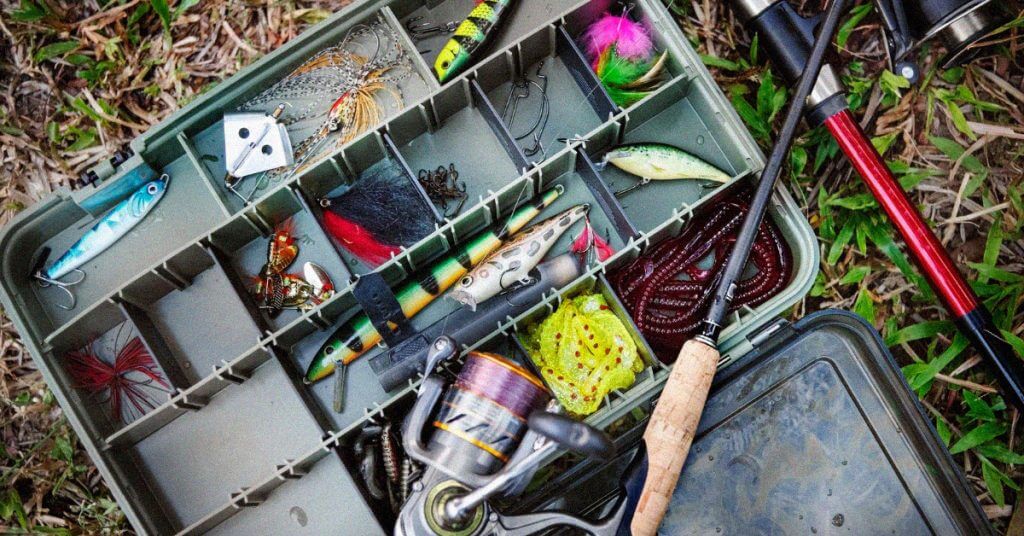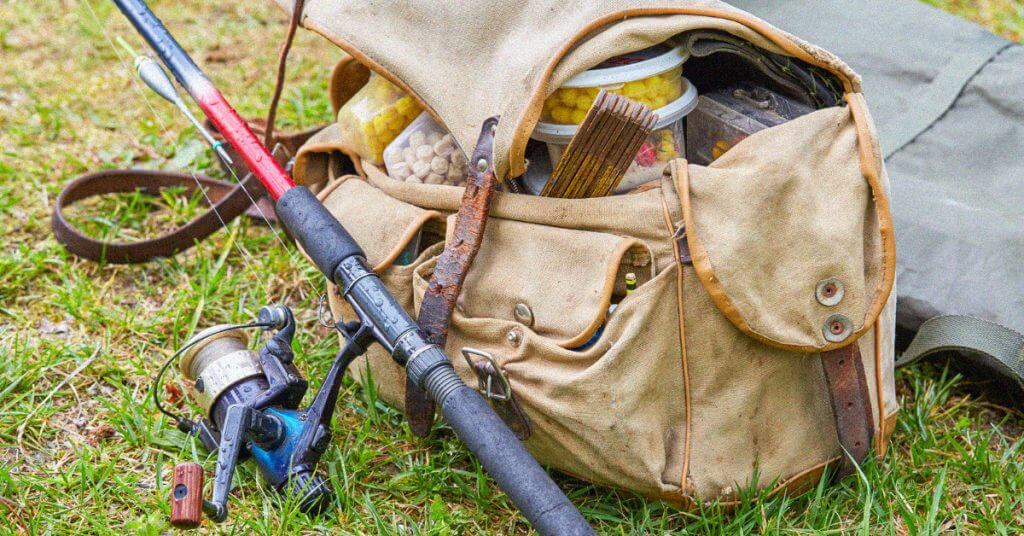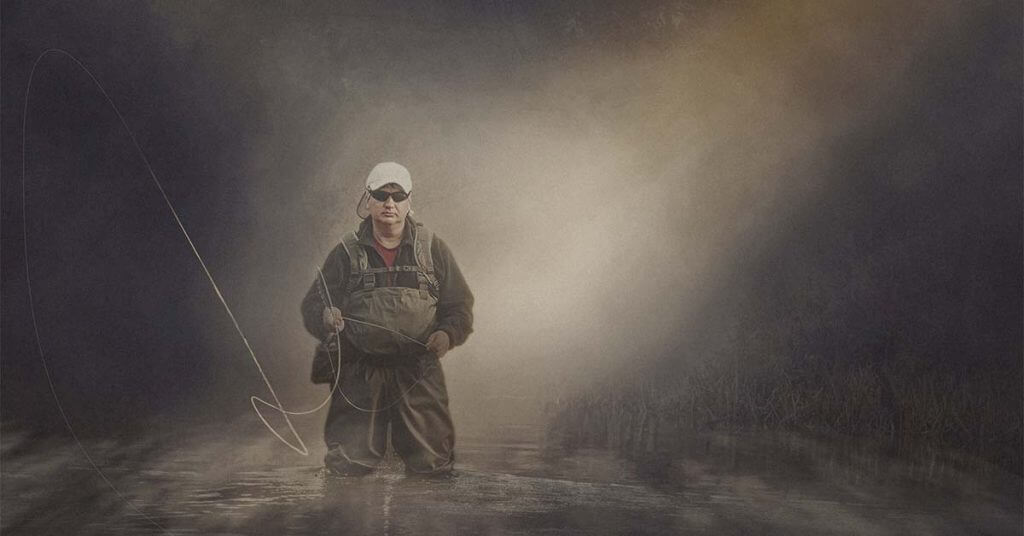Want to know what fishing shoes actually work in real conditions? I tested and ranked 10 pairs that serious anglers swear by.
Last updated: December 20th, 2024
- Best Overall: Merrell Men’s All Out Water Shoes
- Best Bass Fishing: Columbia Men’s Drainmaker III
- Best Budget-Friendly: Aleader Men’s Mesh Slip Ons
- Best Breathable: Shimano Evair Marine Fishing Shoes
- Best Style and Design: Sperry Men’s Sea Kite Sport Boat Shoe
- Best Wading: Hodgman Neoprene Wade Shoe
- Best Barefoot Style: Seekway Barefoot Quick-Dry Aqua Socks
- Best Offshore: Body Glove Barefoot Max Water Shoe
- Best Boots: Huk Men's Rogue Wave Boots
- Best Deep Sea Fishing: Speedo Water Shoe Surfwalker Pro 3.0
- Testing Procedure
- How to Choose Bass Fishing Shoes
- Different Types of Fishing Shoes
- Frequently Asked Questions
- Final Thoughts
Best Overall: Merrell Men’s All Out Water Shoes
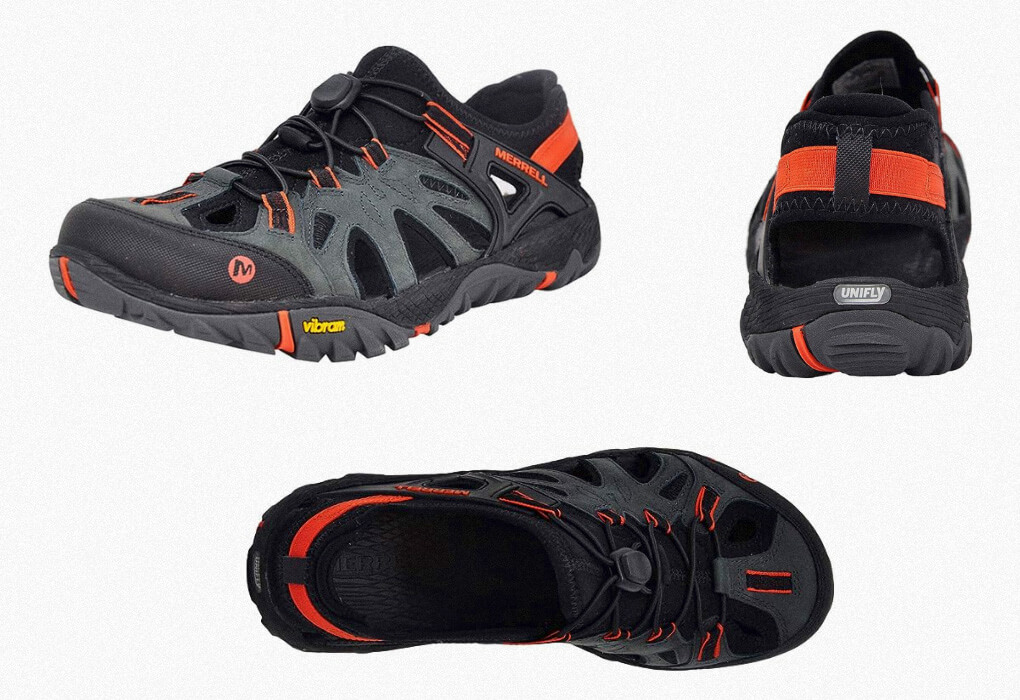
Pros
Cons
Why I Chose Them
If you have wet feet after fishing or you’re slipping on boat decks, these Merrell All Out Water Shoes solve both problems in one day. Let me tell you about my experience with them.
After stepping into knee-deep water while launching my boat, I was amazed at how quickly these shoes drained. Within minutes, my feet were dry – a far cry from the hours of soggy discomfort I used to deal with using regular water shoes.
The drainage system isn’t just marketing hype. I’ve tested it repeatedly during river crossings and launching my boat, and it works exactly as advertised. The strategically placed mesh sections let water escape immediately while allowing enough airflow to dry my feet fast.
However, what really impressed me was the grip. The rocks near my favorite bass spot can be treacherous, but these Merrells handle them with ease.
The same goes for wet boat decks – the rubber sole gives you confident footing even when things get slippery.
Overall, the Merrell All Out Water Shoes sure are pricier than basic water shoes. But, after walking half a mile to my favorite fishing spot without any foot fatigue or blisters, I can tell you they’re worth every penny.
Best Bass Fishing: Columbia Men’s Drainmaker III
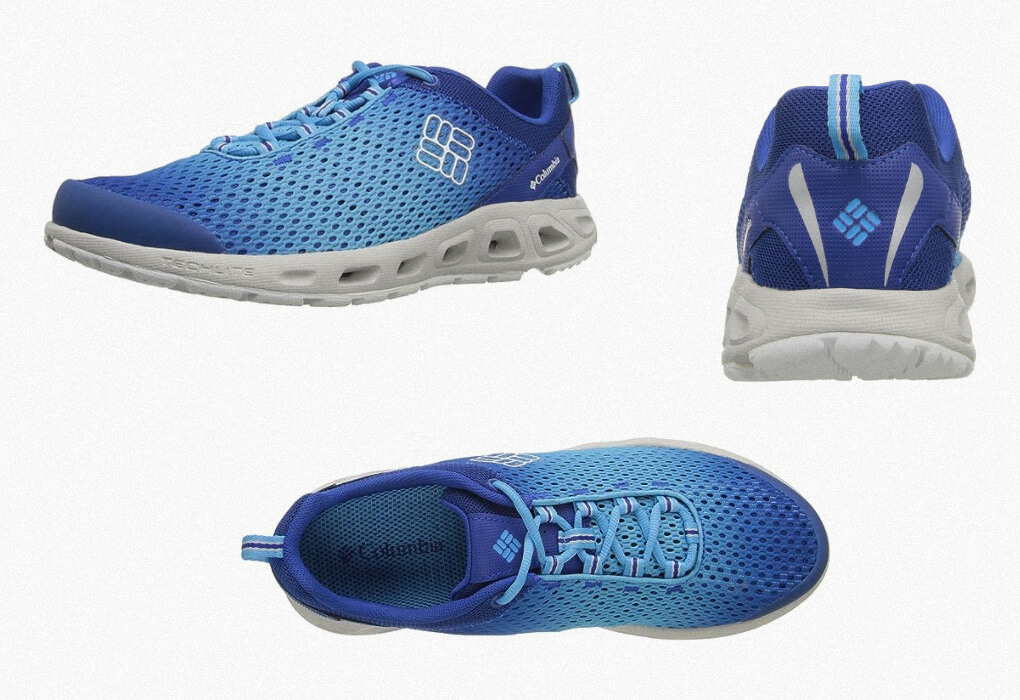
Pros
Cons
Why I Chose Them
I’ll be honest, I was skeptical about Columbia after some bad experiences with their laces, but these Men’s Drainmaker IIIs changed my mind. After testing them along rocky shorelines, I discovered why serious anglers are switching to these shoes.
The name “Drainmaker” isn’t just clever marketing. During my latest fishing trip, I stepped into shallow water to test the drainage, and the open mesh rubber design proved its worth.
Not only did my feet dry quickly, but even after a full day of fishing, there wasn’t that typical wet-shoe odor.
What really sets these apart for bass fishing is the protective toe bumper. If you’ve ever dropped a tackle box on your foot or stubbed your toe on a rock while shore fishing, you’ll appreciate this feature.
During my outings, I did accidentally kick a few rocks, and the toe bumper was effective in saving my toes.
While the single-pull lacing system initially seemed gimmicky, I think it is one of my favorite features of these shoes. When you’re trying to get on the water early for that morning bite, being able to quickly slip these on and off makes a real difference.
They’re also surprisingly lightweight, which matters when you’re covering a lot of shoreline looking for bass.
Bottomline: Yes, these Drainmakers are on the pricier side. However, based on my test experience, they are solid performers for serious bass anglers who do a lot of shore fishing.
Best Budget-Friendly: Aleader Men’s Mesh Slip Ons

Pros
Cons
Why I Chose Them
If you have a tight fishing budget or you’re experiencing sticker shock from premium fishing shoes, you might want to try these Aleader Mesh Slip Ons!
When I first tried them, I was initially skeptical due to the price point. But after testing them, I found them to be surprisingly capable.
The first thing that struck me was just how lightweight these shoes are. You’ll barely notice them on your feet during those long days. Also, the snug fit prevents annoying heel slips when you’re moving around the boat.
These shoes have a breathable mesh which actually does its job, unlike some pricier options I’ve tried.
One thing to note is that these shoes are built like traditional water shoes rather than fancy fishing footwear. For regular anglers who just want something reliable for weekend fishing trips, that’s actually perfect.
That said, they’re not exactly what I’d call stylish – you might get some looks if you wear them to grab breakfast before hitting the lake.
Also, if you’re planning to do any bank fishing on rough terrain, you should know these don’t offer the same ankle support as hybrid-style fishing shoes.
Bottom line: These Aleader Slip Ons give you exactly what you need without the premium price tag. Are they the absolute best water shoes money can buy? No. But they offer great value for anglers who’d rather spend their money on new lures than fancy footwear.
Best Breathable: Shimano Evair Marine Fishing Shoes
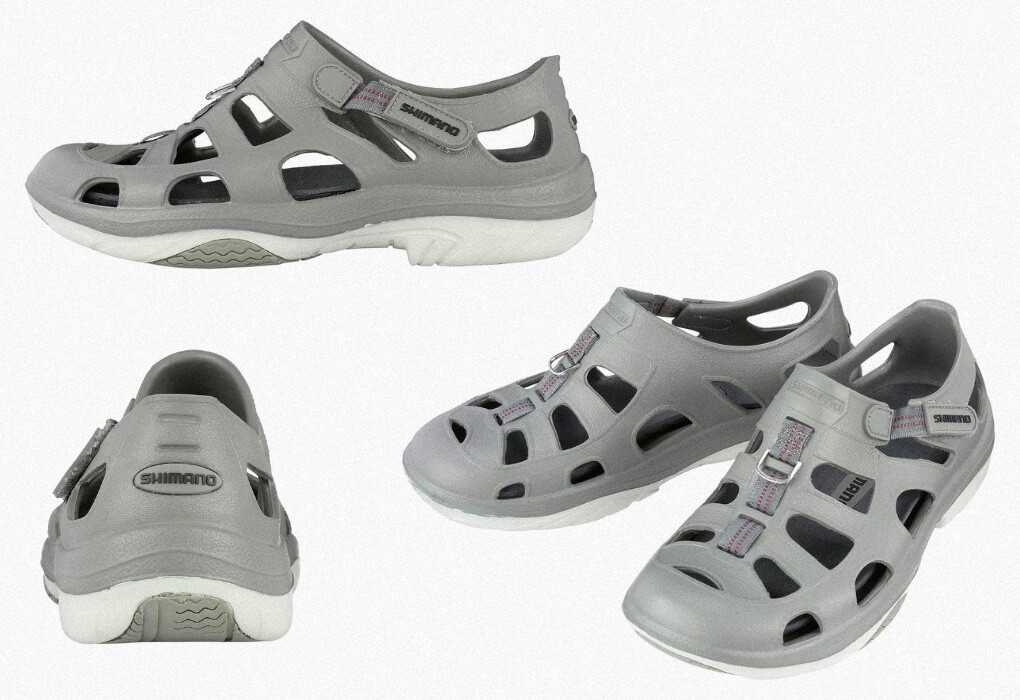
Pros
Cons
Why I Chose Them
Stop using regular water shoes for your summer fishing. Use the Shimano Evair Marine Fishing Shoes instead!
In my experience testing these shoes, their standout feature is versatility. I used them for everything from bass fishing and boating to kayaking, and they handled it all very well. The breathable sandal design meant that I didn’t have to deal with a swamp-foot feeling at the end of a long day on the water.
Here’s something important about these shoes – since they’re made using a one-piece mold, the sizing is pretty tight.
If you intend to buy these, I suggest going up half a size from what you normally wear.
It is worth noting that these are more sandals than shoes, and your toes will be exposed. That open design is exactly what also makes these shoes perfect for summer fishing days. The breathability that they offer is unmatched.
Overall, these Shimano Evair Marine shoes aren’t fancy – they’re straightforward, practical, and they get the job done. For under $50, you get a comfortable, breathable option that’ll serve well whether you’re fishing, boating, or just hanging out by the water.
Best Style and Design: Sperry Men’s Sea Kite Sport Boat Shoe
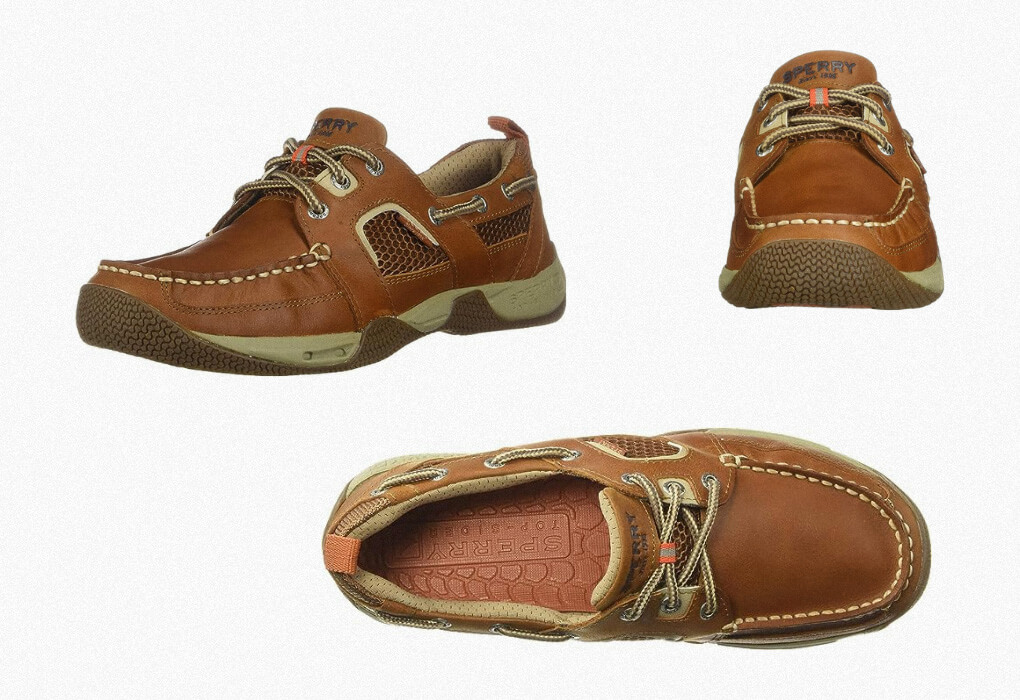
Pros
Cons
Why I Chose Them
If you have style in mind, then the Sperry Men’s Sea Kite Sport Boat Shoes are the best waterproof shoes for bass fishing. Let me explain why.
Their 100% leather construction creates a solid barrier against water while maintaining a classic style. I tested these extensively at local lakes, and they delivered real performance behind their good looks. The leather kept the water out, while cleverly placed mesh panels helped with breathability and odor protection.
However, what really impressed me about these shoes was how lightweight they felt. Despite their leather construction, I found them to be actually one of the lightest as compared to the others in this list. The slip-on design came in particularly handy when I was juggling gear between the car and the boat.
I do need to mention a couple of issues though. The comfort level isn’t great for long days on the water – sometimes you need to sacrifice comfort for looks.
I’ve also noticed some wear after a few months, which shouldn’t happen at this price point (around $100).
All said and done, the Sperry Sea Kite Sport Boat shoes are perfect for weekend warriors like myself who need versatile footwear. I can head straight from morning fishing to afternoon activities without looking out of place.
They might not be the most comfortable fishing shoes out there, but they’re definitely the most stylish ones that still get the job done.
Best Wading: Hodgman Neoprene Wade Shoe
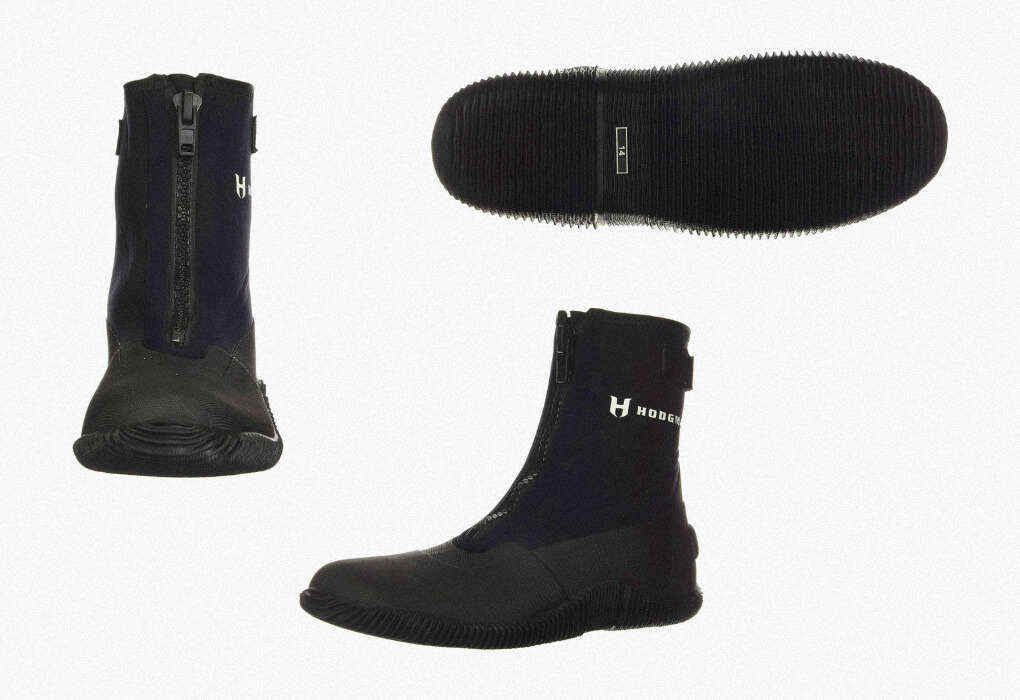
Pros
Cons
Why I Chose Them
The Hodgman Neoprene Wade Shoes are a go-to choice if you don’t want cold, wet feet while wading. After spending countless hours in Texas streams, I’ve learned that regular water shoes just don’t cut it for serious wading.
The neoprene upper construction is what sets these Hodgman shoes apart. In my experience, they keep your feet warm and dry, even when you’re standing in deeper water.
The adjustable ankle cuffs let you control how much water gets in – a feature I particularly appreciate when moving between different depths of water.
These wade shoes handle slow-moving rivers and streams like a champ, offering more support than standard water shoes. While they’re built tough, they didn’t feel like concrete blocks on my feet.
Just one important tip from my testing: be careful about the size. These Hodgman shoes may run larger than advertised.
Best Barefoot Style: Seekway Barefoot Quick-Dry Aqua Socks
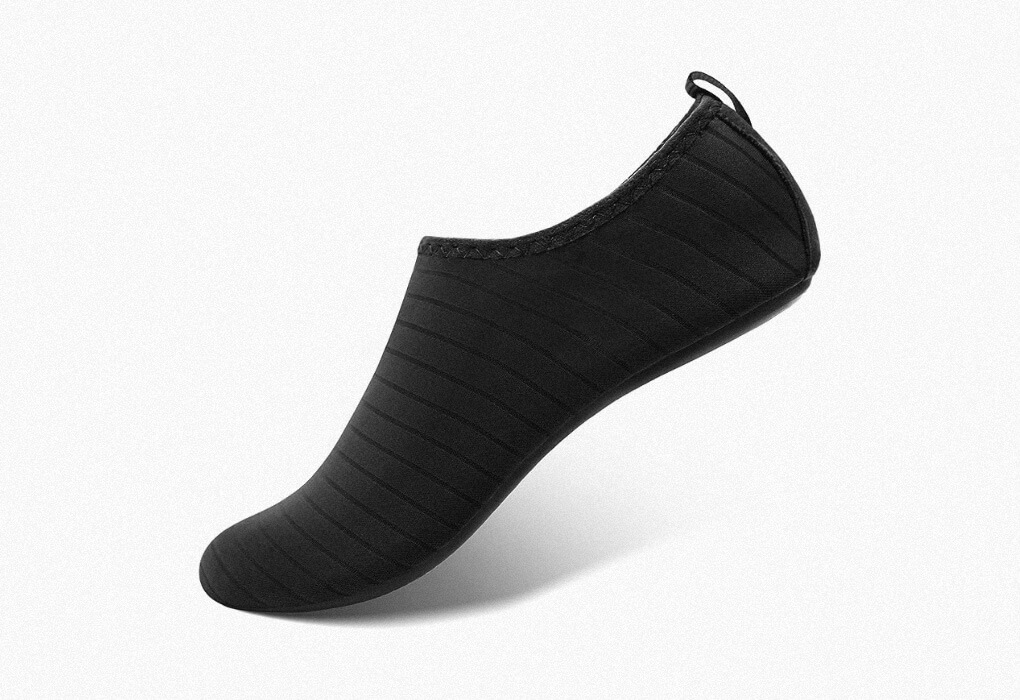
Pros
Cons
Why I Chose Them
If you’re a recreational bass angler who is not looking to spend a significant amount on a pair of shoes, you might want to take a look at the Seekway Barefoot Quick-Dry Aqua Socks. Made with 92% polyester and rubber soles, they’re surprisingly multi-functional for their price point (under $10).
During my testing on the boat, I could easily switch from fishing to swimming without changing shoes.
These shoes are lightweight, making them perfect for moving around the boat or taking a quick dip. The multiple color options are an added advantage – you get a variety of choices.
Just don’t expect them to handle rough terrain well. During my testing, I could feel sharp rocks through the soles. These are best suited for boat fishing or smooth surfaces where you might want to mix some swimming with your angling.
Overall, for recreational anglers who want a simple, affordable option that can handle both fishing and water play, the Seekway Barefoot Aqua Socks fit the bill. Just keep them on the boat or smooth surfaces, and you’ll get solid value for your money.
Best Offshore: Body Glove Barefoot Max Water Shoe
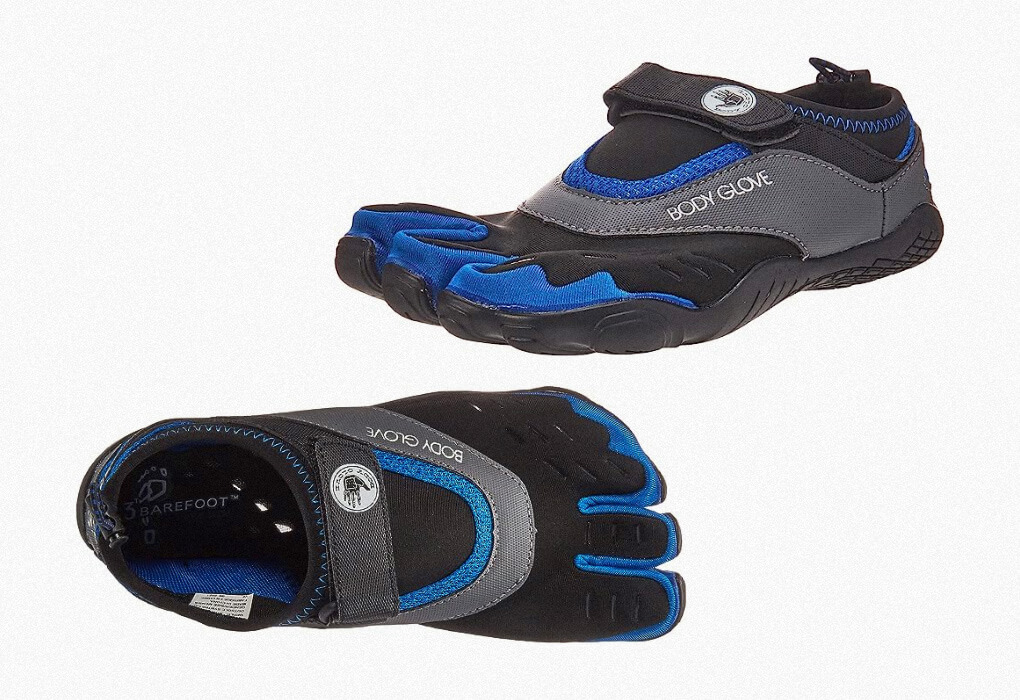
Pros
Cons
Why I Chose Them
The Body Glove Barefoot Max Water Shoes feel fantastic on your feet and offer exceptional support if you have to wear them for a long time.
Their three-toe design really does make a difference in comfort. The reduced sole height gives you better balance – something I really appreciated when moving around on a rocking boat.
While they’re designed for offshore fishing, I’ve tried them for everything from hiking to the fishing spot to taking a quick swim. The flexibility they give your toes helps with balance and grip in all situations.
One important tip from my experience: size up. These run smaller than expected, but once you get the right size, they’re incredibly comfortable for all-day wear. They’re particularly useful when you’re planning a day that involves getting in and out of the boat multiple times.
Overall, these affordable (under $45) Body Glove Barefoot shoes provide excellent comfort and flexibility without breaking the bank.
Best Boots: Huk Men’s Rogue Wave Boots
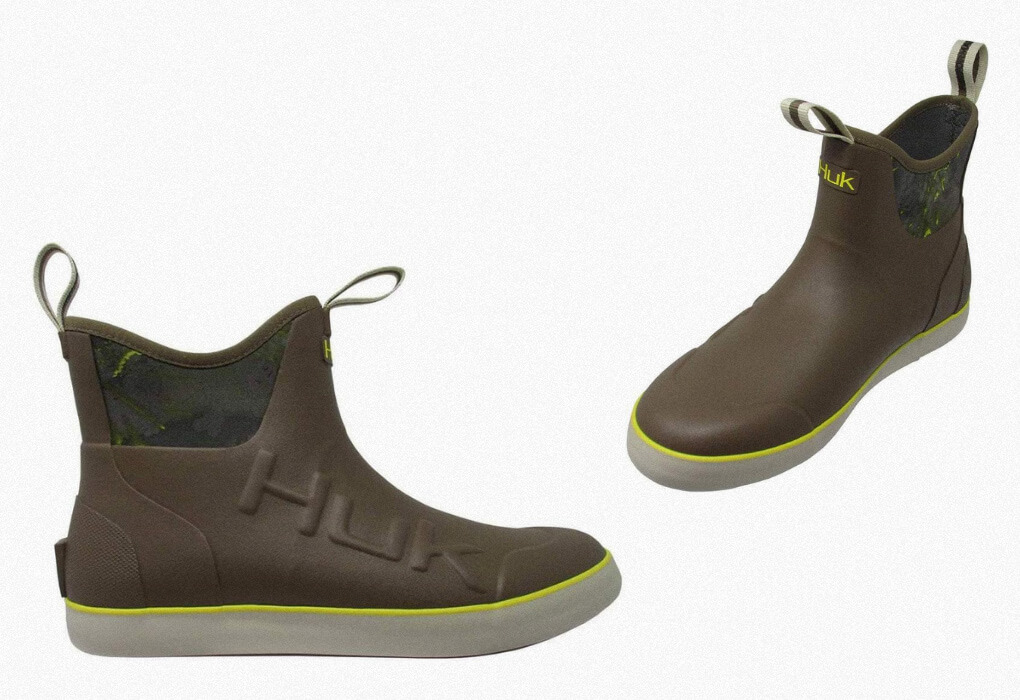
Pros
Cons
Why I Chose Them
If you’re tired of uncomfortable rubber boots, try the Huk Men’s Rogue Wave Boots.
These not only look good; they felt good too. I really appreciated their molded footbeds – something that is helpful during long days on the water. The commercial-grade webbing pull-straps make the boots extra durable.
While they’re comfortable and built to last, I should mention they sit lower than typical fishing boots, running less than a foot up from the sole. For typical land walking in wet conditions, they work great. However, you won’t get much protection in high water.
One important note about sizing: like many water shoes we’ve looked at so far, these run small. You may likely want to order a size larger than usual.
That said, they’re surprisingly lightweight and breathable for rubber boots.
Best Deep Sea Fishing: Speedo Water Shoe Surfwalker Pro 3.0
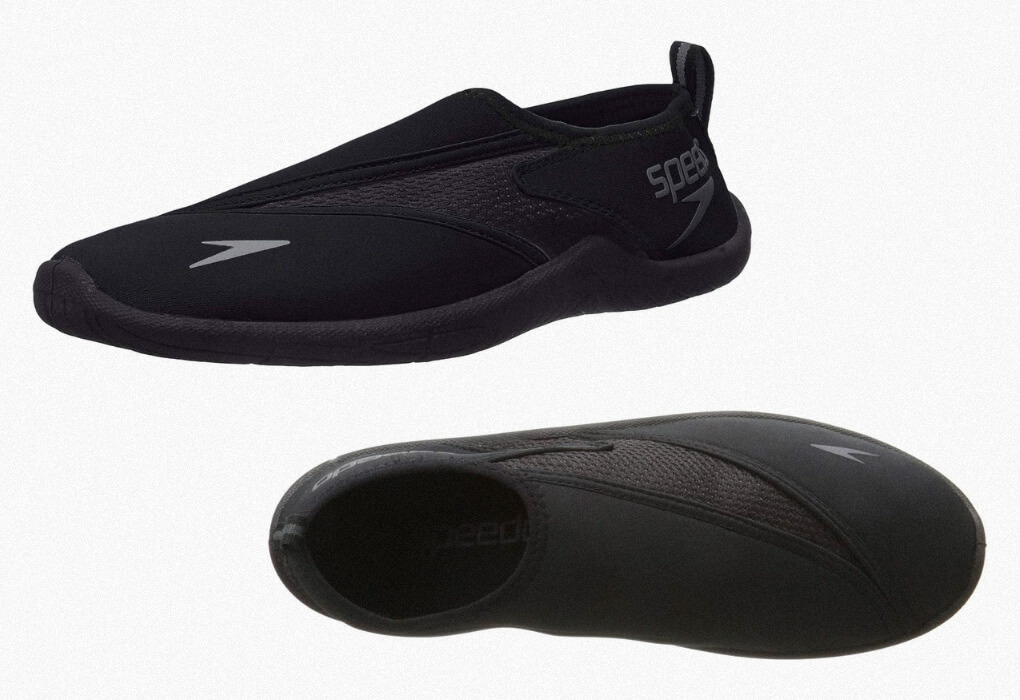
Pros
Cons
Why I Chose Them
If you have slippery deck problems or you’re experiencing wet feet all day, you might want to try the Speedo Surfwalker Pro 3.0 Water Shoes!
They are built specifically for long days on the water. The upper stretch portion makes them incredibly easy to slip on and off, while the non-slip grip keeps you steady on wet decks.
These shoes are breathable and quick-drying, so my feet didn’t get waterlogged during a deep sea trip. I found them lightweight enough to wear all day without fatigue, and at this price point (under $35), they are affordable too.
Just keep in mind that these shoes aren’t meant for terrain walking – you’ll want to pack separate shoes for the trek to and from the boat. But for those long hours on deck, I can say that these provide the comfort and grip you need.
Testing Procedure
While testing the best bass fishing shoes, I look for a few different features that can be summed up in comfort, traction, and budget.
- Comfort: First of all, if the shoes aren’t comfortable, I won’t be wearing them for long. I’ve had water shoes that were very uncomfortable and it made for a miserable day.
I check to see if the shoes have adequate padding in the sole and fit my feet well, boating shoes tend to be the most comfortable.
- Traction: While fishing you’re going to encounter slippery surfaces, so you’ll need shoes with excellent traction, especially when they’re wet. This is why fishing sandals don’t top my list.
- Price: We’re all on a budget, and I sure don’t want to spend a fortune on shoes I’ll expose to the water time and time again.
So I look for reasonably priced fishing shoes. Sometimes that means an old pair of tennis shoes will work great.
How to Choose Bass Fishing Shoes
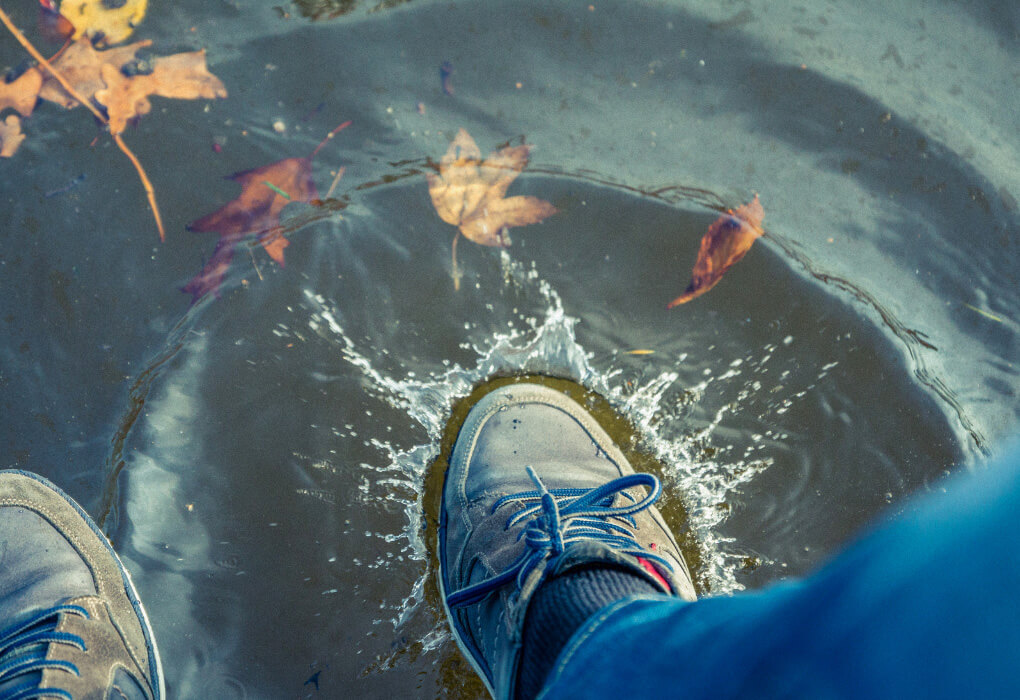
Now that you’ve seen some great examples of the best fishing shoes, it’s time to break down what makes one desirable. You might think, “They’re just shoes, who cares?”
They’re almost as important as your fishing hat.
I always say that shoes are the most important part of everything we wear because I can handle a T-shirt that I don’t like, but I’d hate to walk around all day in an uncomfortable pair of shoes.
Material
The first thing you’ll look at is the material of the shoes.
Some shoes are made using polyester, while others are leather. The type of material will not only play into the durability of the shoe, but it will weigh heavily on how comfortable and waterproof it is.
If you’re shopping for bass shoes, chances are you’re looking for something that isn’t afraid to get wet. They also need to dry quickly so you’re not walking around for hours with wet and heavy shoes.
I see a lot of popular companies using neoprene and synthetic rubber to make shoes. These ingredients are often used in waders because you need to ensure not a drop of water makes it through the material.
Grip and Support
Grip is a funny subject with these shoes because some come with incredible non-slip grips like a hiking boot while others have nothing at all.
I think it’s important to pay attention to the application that you plan to use for the shoes. It doesn’t hurt to keep more than one pair on you.
For example, if you have to walk a long distance to reach your fishing spot, you’ll want to have a shoe that offers great traction as well as arch support so your feet aren’t sore after a long day of walking.
One of the essential bass fishing basics is to remember that safety is always important, so make sure your shoes offer the right amount of support.
Comfort
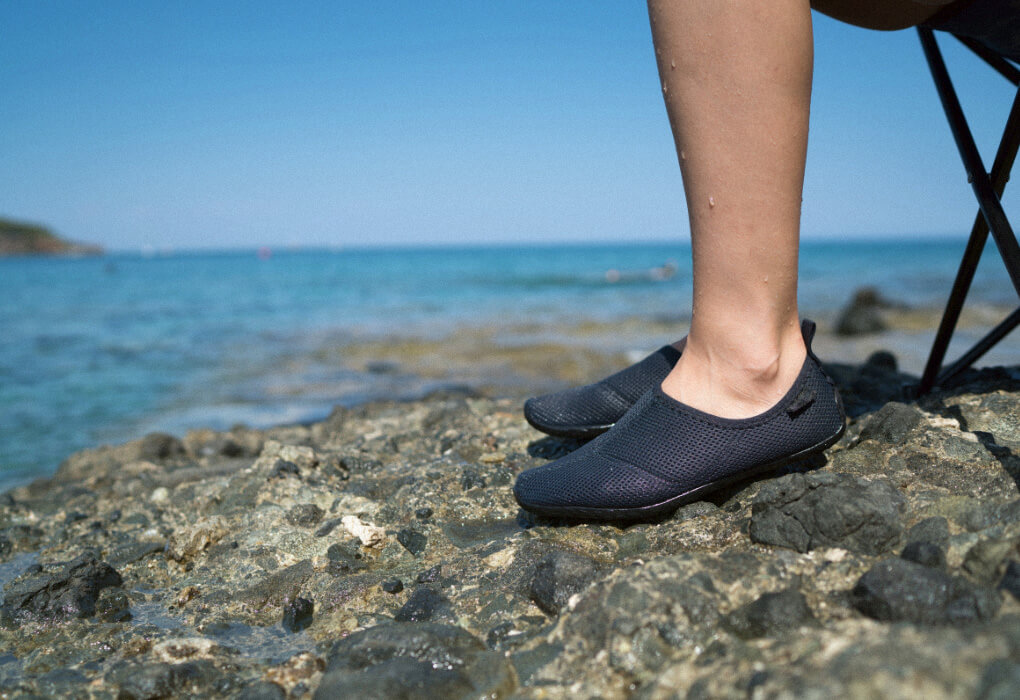
Coming in right in line with grip and support is the comfort of the shoes. Who wants to walk around all day in a shoe that hurts their feet or causes them discomfort?
Unfortunately, when you’re shopping on Amazon, you don’t have the luxury of trying the shoes on – but does a shoe ever feel good when you wear it for the first time?
You want to look for features like breathability, water draining, and how they fit most feet. It’s always helpful to read reviews when shopping for something that requires a size.
Each body is different, and your feet might be a bit wider than someone else’s.
Personally, I’ve always thought I had wide feet so someone might tell me they loved a certain shoe, I’d buy the same one and couldn’t stand it. Whereas, if they bought the shoe I liked, they’d be swimming in it.
All of the fishing water shoes I reviewed above come with extensive water draining and airflow features, so you shouldn’t have to worry about these problems.
Versatility
If there’s one thing I learned from this review, it’s that there is a shoe for everything. Years ago, a water shoe was a nylon mesh type material that you’d wear in the ocean or at the public pool, so you didn’t get an infection!
Today, a water shoe is made with all different materials, and not only can you get them wet, but you can go rock climbing after wading across a river because they dried out in five minutes.
Many are incredibly versatile, so you don’t need to put them on only when you’re ready to get wet.
The best shoes for kayak fishing are also the same shoes you can wear to your sister’s baby shower. (okay, maybe not)
Durability
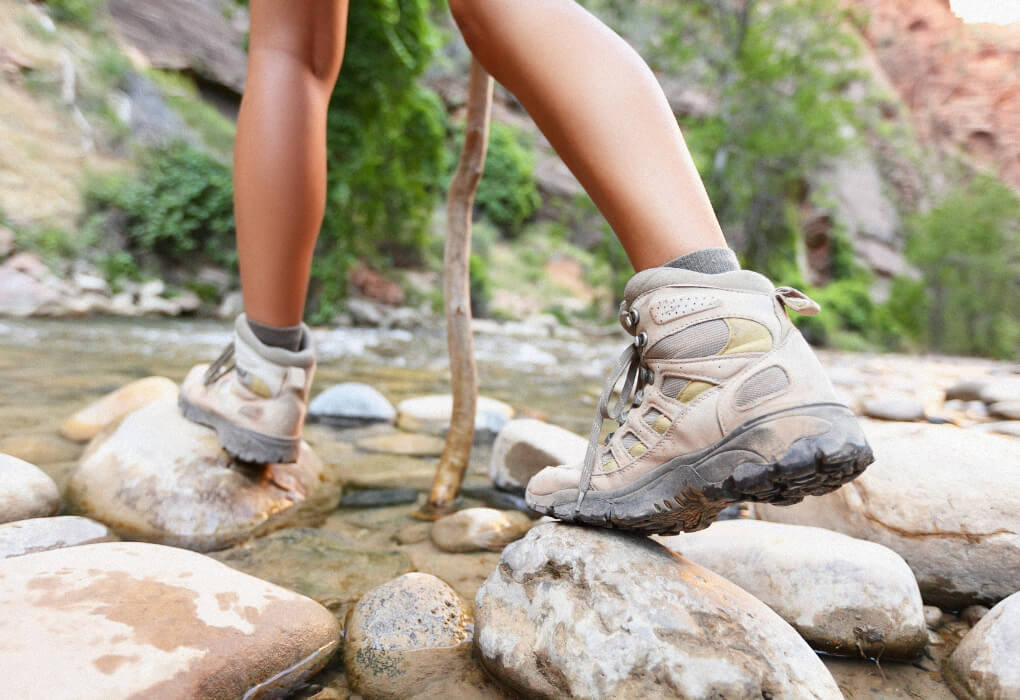
I’ll be honest here; these shoes are not cheap by any means, so you want to make sure you’re buying the shoes that will last and give you your money’s worth.
You wouldn’t want to go out and spend $80 on a pair of shoes that break down in a few months.
Keep in mind that you’re exposing these to harsh elements and water for long periods of time, so even the most expensive shoes with the best materials will not last forever.
I’m a big believer in going with the best-name brands in the industry because of their reputation. I’ve found that in the outdoor space, you should always choose the company whose name you remember.
That said, there are a few things to look for. The most durable pairs will have stitched soles, and the tongue will be securely installed to the side of the shoe, which will ensure debris doesn’t get inside.
You don’t want the shoe to have a lot of open areas. You’ll notice that many don’t come with a fancy appearance, and they don’t have a lot of nooks and crannies.
Although they’ve come a long way, these are working shoes, so they don’t need to look fancy. The simpler, the better but always shop by brand reputation if you can.
Weight
The lighter the shoes, the more comfortable they are. When you consider weight in conjunction with durability, material, comfort, and traction, you find yourself with the perfect shoe.
Anglers never know where the fishing trip will take them, and sometimes that means you have to walk a long distance with your rods and reels.
The last thing you want to do is walk that distance with wet, heavy shoes that got soaked with water. As you can see by now, all of the qualities of the best shoe come full circle.
If you lack any one of these features, you’ll probably have an uncomfortable shoe. Luckily, all the options I recommended above are lightweight, comfortable, breathable, and durable.
Different Types of Fishing Shoes
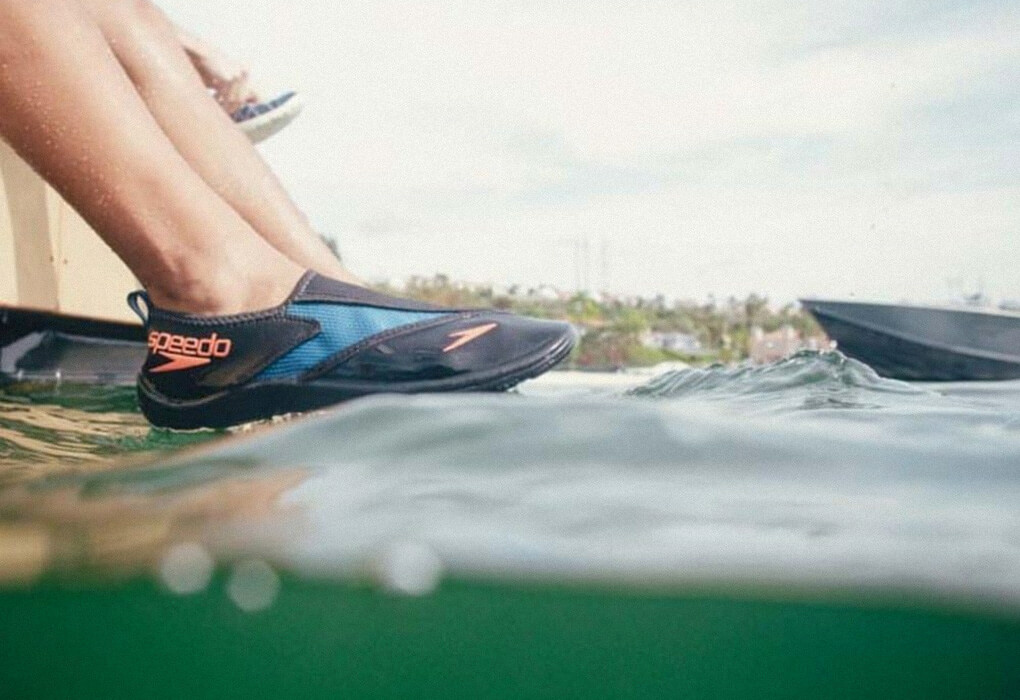
It’s great to know what to look for in the best shoes, but you might not even realize that there are a few different types. When shopping around, make sure to look out for the following and keep each of these points in mind.
Waders
Waders have a few different purposes, and some are different than others. In the review portion of the article, I looked at wader boots. These aren’t the same as the waders that come up to your chest with suspenders.
Wader boots usually run up to the thigh, and they’re made of a rubber or neoprene material that prevents any water from penetrating them.
They have the important job of keeping your clothes dry when you’re wading through high river water or standing out in the water doing some fly fishing.
I commonly see these used the most with bootless fishing waders because you need to have a backcast so you can’t fly fish from the shore.
Mesh Shoes
Most of the shoes reviewed above come with some form of mesh. The mesh helps the shoe breathe, but it also contains a drainage system that lets the water escape when it comes in.
Mesh fishing shoes are different from your traditional mesh shoes in that regard.
Standard shoes will take on water, but they won’t have a way for it to drain, and they won’t dry as quickly as fishing shoes. The reason I prefer this style is because they’re multi-purpose.
You can wear these on the way to the lake and for a quick bite to eat afterward – you often can’t tell.
Deck Shoes
Deck shoes are sometimes called boat shoes. We looked at one of these styles above, but the way you can usually tell a deck shoe is it looks a lot like a loafer.
They’re made with mostly leather and have oil on the outside to help keep the water out.
I wouldn’t typically recommend these shoes for most fishing situations because the whole process usually requires a bit of leg work.
These shoes can easily slip off your feet, and they don’t provide a lot of traction and support if you’re stepping over rocks and through the mud.
These will be a good choice if you’re headed out on a fishing charter for some deep-sea fishing. They come with non-slip grips to help prevent falling on slippery decks.
Clogs
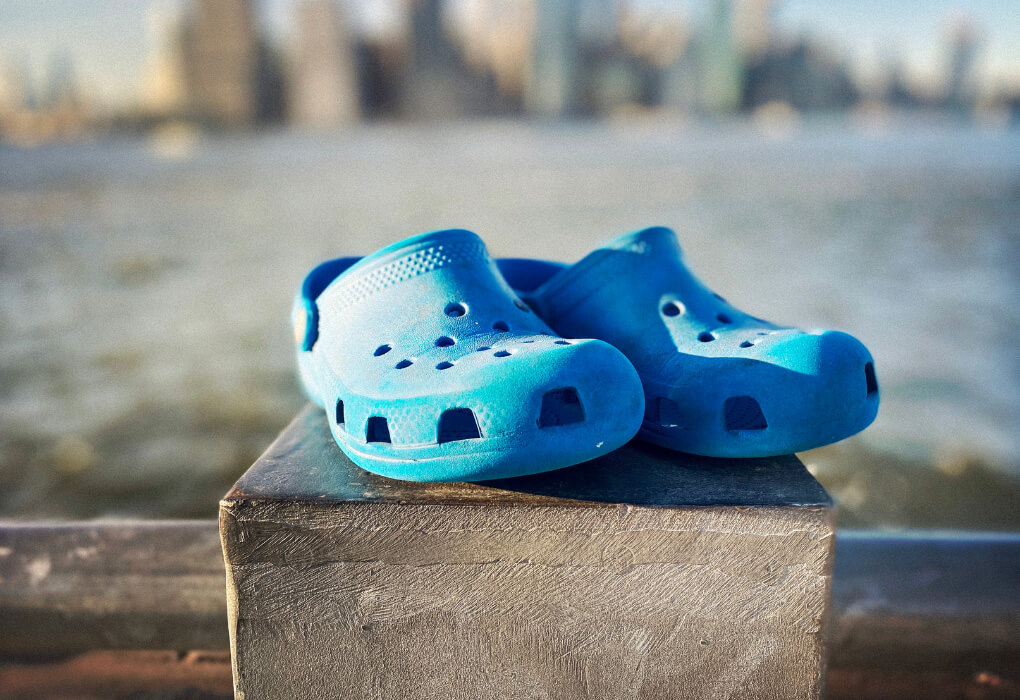
The term clogs has evolved quite a bit over the years. At one time, a clog was a highly uncomfortable wooden shoe used for dancing. Today, we have rubber clogs that we wear to go fishing. The world is a crazy place, huh?
Anyway, you’ve heard of Crocs, and that’s a rubber clog. These usually have spaces to purposely let air and water onto your feet for breathability and ease of use.
The advantage with these is that they’re super comfortable, and if you get mud on your feet, you can rinse them off in the water, and you’re good to go.
Water Shoes
There are many different types of water shoes, but the traditional ones consist of a tight-fitting mesh with rubber soles. They don’t usually have lacing, and you need to pull them over your feet to get them to fit.
I’ve also seen some interesting ones where you insert your toes into form-fitting sleeves, which allows you to move them independently.
I would imagine the plus is increased mobility and control, which would help if you have to walk a long distance or when launching your boat.
The standard water shoes are popular with water sports because you can completely submerge them in water and they don’t fall off easily.
Frequently Asked Questions
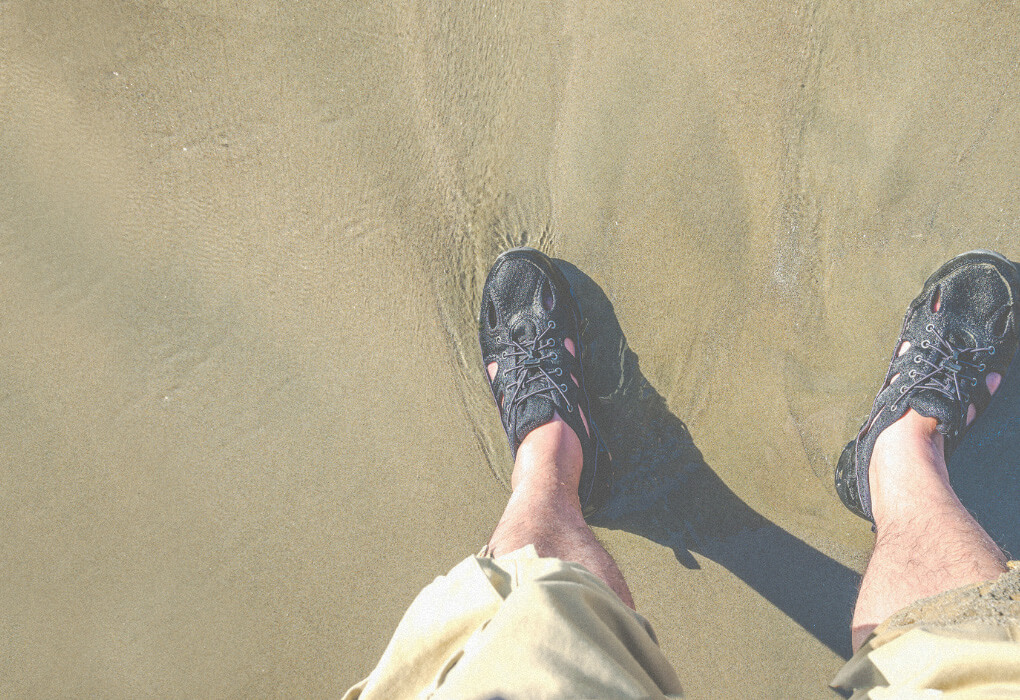
Do I really need fishing shoes?
Have you ever worn flip-flops on a fishing boat? Try it out and see how it goes. I’ve made that mistake a few times.
They are not essential, but safety and comfort is an important part of fishing.
They don’t cost much more than a typical sneaker that you would buy at the store, so it’s worth grabbing yourself a pair so you can stay comfortable, dry, and safe.
What type of fishing shoe should I buy?
Whatever type you want! Take a look at everything above and make that determination for yourself.
If you don’t find yourself walking far to your fishing spots, you might be fine with deck shoes or basic water shoes.
Perhaps you do a ton of walking, and you never even knew thigh waders existed. You could get yourself a pair of those instead.
It’s all about understanding your needs and making a purchase based on that.
What should the outsole of fishing shoes be made of?
A: I don’t think there is a right or wrong answer to this question because it depends. Each type of shoe is different, so it comes with a different material on the outside.
If you have a wader, you need to make sure that not a single drop of water makes it through because you’re not only going to wet your feet but also your pants.
On the other side, if you’re wearing mesh fishing shoes, you’re expecting to get a little wet, but they dry quickly, so it’s okay.
It’s not about which material is the best; it’s about which material is right for you.
Can I wear fishing shoes outside of fishing and boating?
A: Absolutely, that’s why I was saying I like some of the new mesh fishing shoes because they look like a standard shoe.
Take the Columbia Men’s Drainmaker III, for example.
These don’t appear all that different from a regular shoe you would buy from the store so as long as you’re not covered in mud from head to toe, you could likely go out and do whatever it is you have to do after a fishing trip, and no one would notice.
What are the best shoes for kayak fishing?
Kayak fishing almost always requires your feet to get wet when you first launch the boat, but then you’re pretty much dry for the rest of the time.
I would suggest using mesh fishing shoes for this because you’ll want something lightweight and comfortable.
These will also dry quickly, so once you’re in the kayak, you’ll be able to dry up.
Final Thoughts
It’s time to wrap this one up! By this point, you should have a strong understanding of the best fishing shoes for bass. Make sure to keep in mind what a typical fishing trip looks like for you.
If you do a lot of walking or hiking, you’ll want to go for a lightweight mesh shoe or waders as long as they’re not too heavy.
If you spend most of your time on the boat or you do a lot of saltwater offshore fishing, you would prefer a deck shoe because they prevent slipping on water, but they’re not the best choice for stepping over rocks or moving through weeds when fishing the slop along the shoreline.
Regardless of the choice you make, keep all these points in mind before making a purchase. Your feet, your money, so choose wisely!

